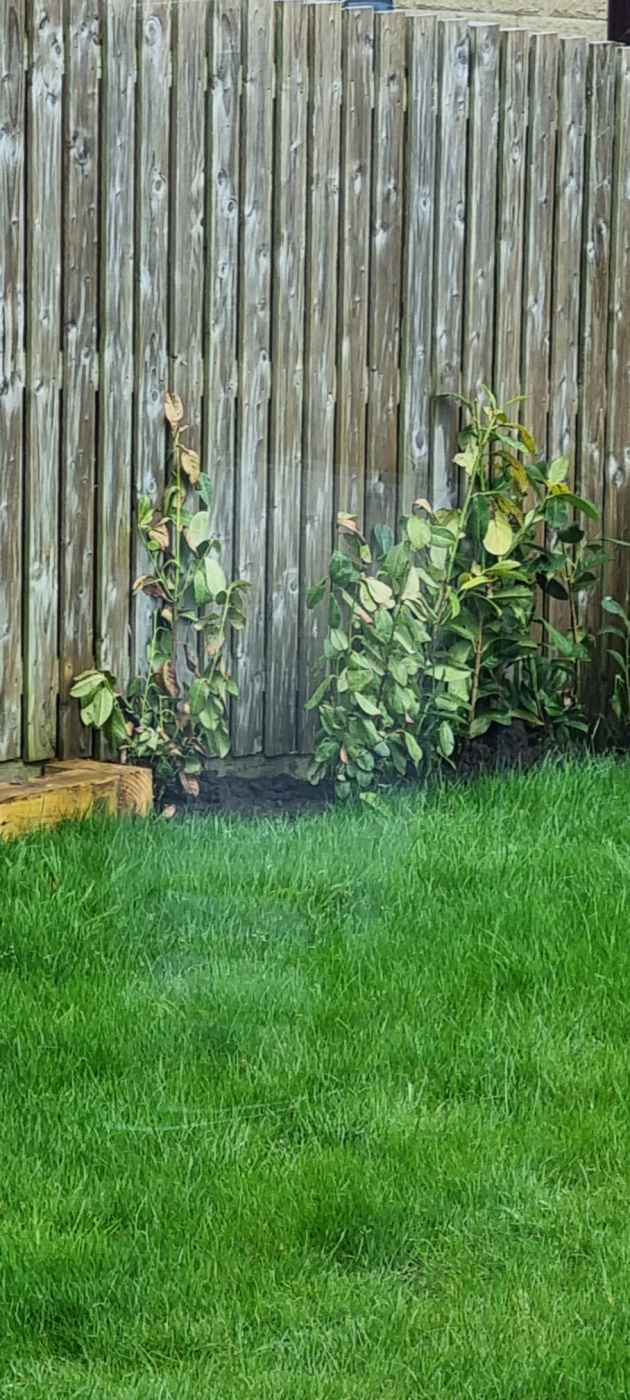This Forum will close on Wednesday 27 March, 2024. Please refer to the announcement on the Discussions page for further detail.
New laurel hedge
in Plants
Hi everyone. Novice gardener here and this is my first post so I'm looking for help...
I had a lot of 3ft laurels planted at the bottom of my garden about four weeks ago by a landscaper, but as you can see from the pictures, they don't look how we expected them to look!
They were originally planted in the original soil which I'd describe as clay soil. They were falling over when it was windy the other week and they are turning yellow in places. I'm sure the roots were showing and they are planted very close together. He has since come back and put top soil on top of the existing soil.
The garden was previously sloped and because it was a new build, the ground was left untouched for a year or so. I'm not sure if maybe they've been overwatered due to the rain over the winter in the soil, whether they're underwatered as they're turning yellow, or something else, but I've spent a lot of money on them and wouldn't want to have to replace them all.
Any advice would be appreciated.


I had a lot of 3ft laurels planted at the bottom of my garden about four weeks ago by a landscaper, but as you can see from the pictures, they don't look how we expected them to look!
They were originally planted in the original soil which I'd describe as clay soil. They were falling over when it was windy the other week and they are turning yellow in places. I'm sure the roots were showing and they are planted very close together. He has since come back and put top soil on top of the existing soil.
The garden was previously sloped and because it was a new build, the ground was left untouched for a year or so. I'm not sure if maybe they've been overwatered due to the rain over the winter in the soil, whether they're underwatered as they're turning yellow, or something else, but I've spent a lot of money on them and wouldn't want to have to replace them all.
Any advice would be appreciated.


0
Posts
Loads of water is fine, and clay is ideal for laurel, but landscapers often know very little about actual gardening, and the prep is always important, so if they've just been chucked in without the soil being properly prepped/amended, it won't be ideal. Just putting more soil around them won't correct that.
Everything you need to know about laurel hedging here:
https://forum.gardenersworld.com/discussion/656523/help-needed-please-with-laurel-hedge-issues/p1
I live in west central Scotland - not where that photo is...
"Have nothing in your garden that you don't know to be useful, or believe to be beautiful."